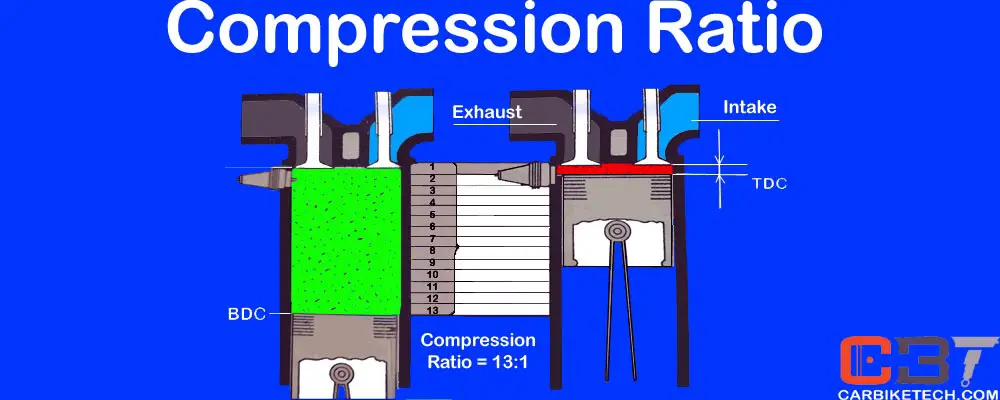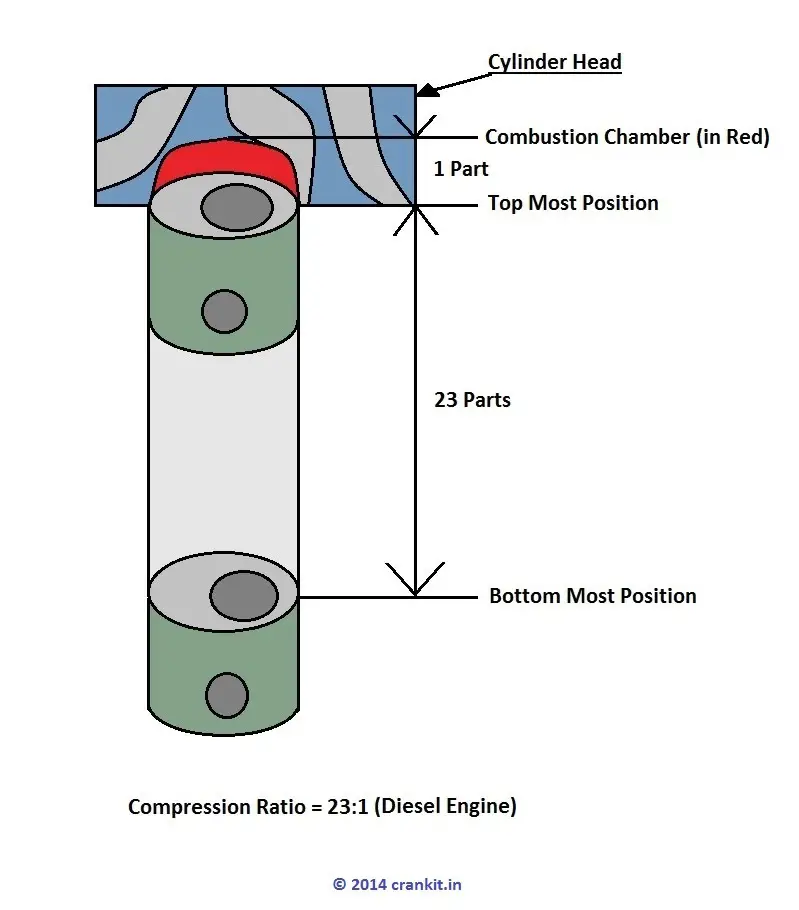What is the Compression Ratio?
The Compression Ratio is one of the fundamental specifications of an Internal Combustion engine. It is the ratio of the volume above the piston when it is at the bottom-most position (BDC) to the volume above the piston when it is at the top-most position (TDC). It indicates the extent to which you compress the air-fuel mixture in the engine.
It is the combustion chamber volume ratio from its largest to smallest capacity. It is the ratio between the combined volume of the cylinder alongwith the combustion chamber when the piston is at BDC (bottom dead center) to the volume of the combustion chamber alone when the piston is at TDC (top dead center). This ratio is one of the fundamental specifications for all internal combustion engines.
Working:
Since Petrol is very volatile, the ‘Compression Ratio’ for Petrol engines is typically lower. Thus, it varies from 10:1 to 14:1. The petrol engine compresses the air & fuel with a ratio between 10:1 to 14:1. The petrol engine mixes petrol with air & compresses this mixture in the combustion chamber. The better mixing of air and fuel with each other makes it homogeneous. An electric spark plug then ignites the compressed air-fuel mixture with a spark. Thus, it causes the fuel to burn completely and instantly.

In diesel engines, the ‘Compression-Ratio’ varies from 18:1 to 23:1, which depends on engine design & construction. The petrol engines use the ‘Spark Ignition’ method. However, the diesel engine technologies such as ‘Direct Injection‘ & ‘InDirect Injection‘ & ‘Common-rail Direct Injection‘ use the ‘Compression Ignition‘ method. However, the compression ratio remains almost the same for both the petrol engine and diesel engine, respectively, regardless of the engine capacity/displacement.
Advantages of Higher Compression Ratio:
The higher is the compression-ratio, the better the engine’s thermal efficiency. Thus, the engine can extract more mechanical energy from the given mass of the air-fuel mixture. In that context, diesel engines have enhanced fuel efficiency for the same amount of fuel as petrol engines.
It means, let’s say, you compare the conventional petrol and diesel engines with the same engine capacity of 1.0L. Then, in the real world, the 1.0L diesel engine will consume less fuel than the 1.0L petrol engine. In other words, a car with a 1.0L diesel engine would give higher mileage as compared to the one with a 1.0L petrol engine under similar driving conditions.
Continue Reading: What is the Air-Fuel Ratio in Petrol Engines?>>

